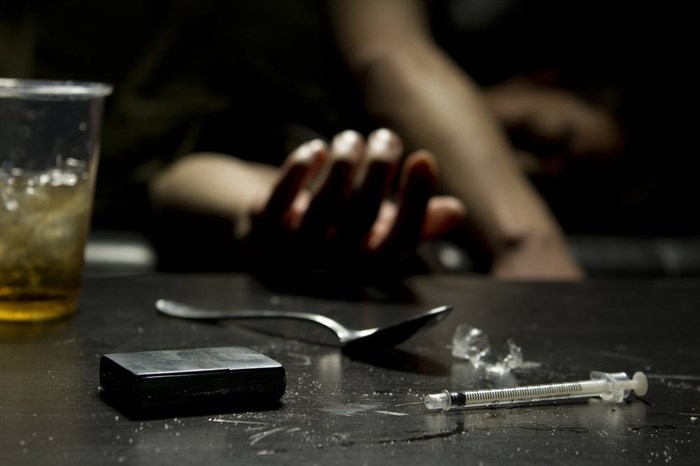
Image Credit: Shutterstock
October 12, 2017 - 5:31 PM
KELOWNA - What’s with Kelowna and drug overdoses?
The latest numbers from the B.C. Coroners Service shows the Okanagan Health Service Area, which includes Kelowna, Vernon and Penticton, at 45.6 deaths per 100,000 people, is among some of the highest rates of overdose deaths in the country.
At the centre is Kelowna itself, which was the scene of 60 overdose deaths from January to August 2017, the highest by far within the Interior Health Authority.
Chief medical health officer Dr. Trevor Corneil says those numbers and others contained in Kelowna’s recently published community overdose profile are both unsurprising and very disturbing.
“We certainly see this with a sense of urgency and the question of how do we deal with this,” he adds.
Corneil says Kelowna’s numbers are closing in on some of worst areas in the country for drug overdose deaths in Vancouver, Toronto and Montreal.
“The highest places in the country are these ghettos (like Vancouver’s Downtown Eastside) where the rate ranges from 50 to close to 100 deaths per 100,000 people,” he says. “This is not surprising considering the amount of drugs sold in these areas and the concentration of users and just the sheer number of people living there.”
But Corneil says Kelowna doesn’t have anything that would qualify as a ghetto, making the response to the opioid crisis more complicated.
“They’re dying at home in cities of this size, dying not in a ghetto but a regular neighbourhood, they are using regularly, primarily using opiates as their drug of choice and IV injection as the route,” Corneil says. “In that sense, Kelowna is no different than any other large city in the country. We’re dealing with a slightly dispersed version of that.”
The community overdose profile for Kelowna shows overdoses and overdose deaths are disproportionately affecting males between 30 and 49 and the aboriginal community. It also says the city is home to 34 per cent pf overdose deaths in the Interior Health Authority service area despite only having 17 per cent of the population.
While the downtown and Rutland are the hotspots where most overdoses happen, Glenmore and the area around UBC Okanagan get their share.
The profile shows 44 per cent of overdoses happening in residential areas with just 17 per cent in the central business commercial zone. About eight per cent of overdoses happened in parks and open spaces.
The opioid fentanyl continues to play a leading role in overdose deaths. The B.C. Coroners Service detected fentanyl and fentanyl analogues in 90 per cent of Kelowna overdose deaths from January 1 to May 1.
About one third of overdoses reported at Kelowna General Hospital were among daily drug users while 20 per cent were occasional users and another 16 per cent used weekly.
Corneil says the numbers show roughly one per cent of the city’s population of 125,000 are estimated to have mild to severe symptoms of substance use disorder, which most often means they are using intravenous drugs.
“That’s huge,” he says. “Do we acknowledge they exist and do we have the capacity in our system to support people in getting treatment. The answer, unfortunately, is no, although that’s not just specific to Kelowna.”
Corneil says the number one problem facing hardcore drug users in Kelowna is the stigma attached to their behaviour.
“People here are not very compassionate about other people using drugs. They think they are choosing to use instead of having an underlying disease,” he says. “Perhaps they’ve had to make some difficult or complex or bad choices along the way but most are not actively wanting to use.”
Put another way, Corneil says one in 20 people on the spectrum of substance abuse disorder in Kelowna are dying.
“There’s nothing else that kills people at that rate,” he says. “That’s already three times the rate of homicides in B.C., three times the rate of suicide and three times the rate of deaths from alcohol. So here we have something that is killing us at three times the rate of everything else and we don’t want to talk about it.”
Corneil acknowledges Interior Health is playing catch-up providing drug and alcohol treatment but has made progress providing suboxone and methadone as opioid alternatives, doubling their availability and reducing wait times to get into the program.
Use of the mobile supervised drug consumption site — a modified RV that travels between downtown Kelowna and Rutland — has steadily increased with about 1,300 visits in July.
The health authority has also pushed to distribute the overdose reversal drug Naloxone, distributing approximately 2,500 kits in the Central Okanagan between January and July of this year.
To contact a reporter for this story, email John McDonald or call 250-808-0143 or email the editor. You can also submit photos, videos or news tips to the newsroom and be entered to win a monthly prize draw.
We welcome your comments and opinions on our stories but play nice. We won't censor or delete comments unless they contain off-topic statements or links, unnecessary vulgarity, false facts, spam or obviously fake profiles. If you have any concerns about what you see in comments, email the editor in the link above.
News from © iNFOnews, 2017